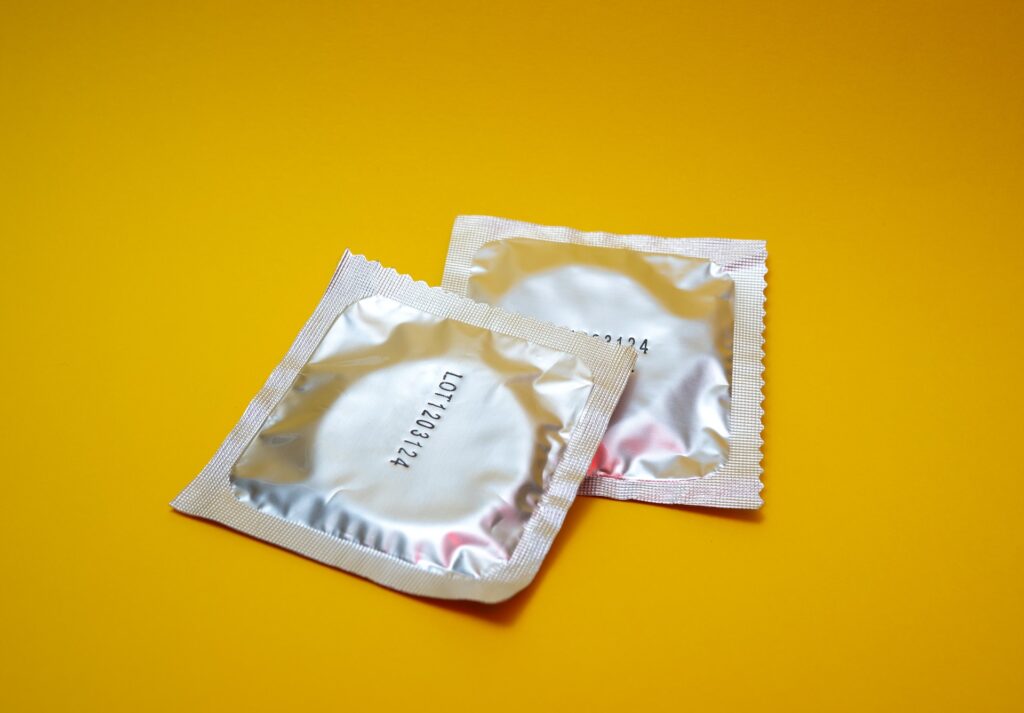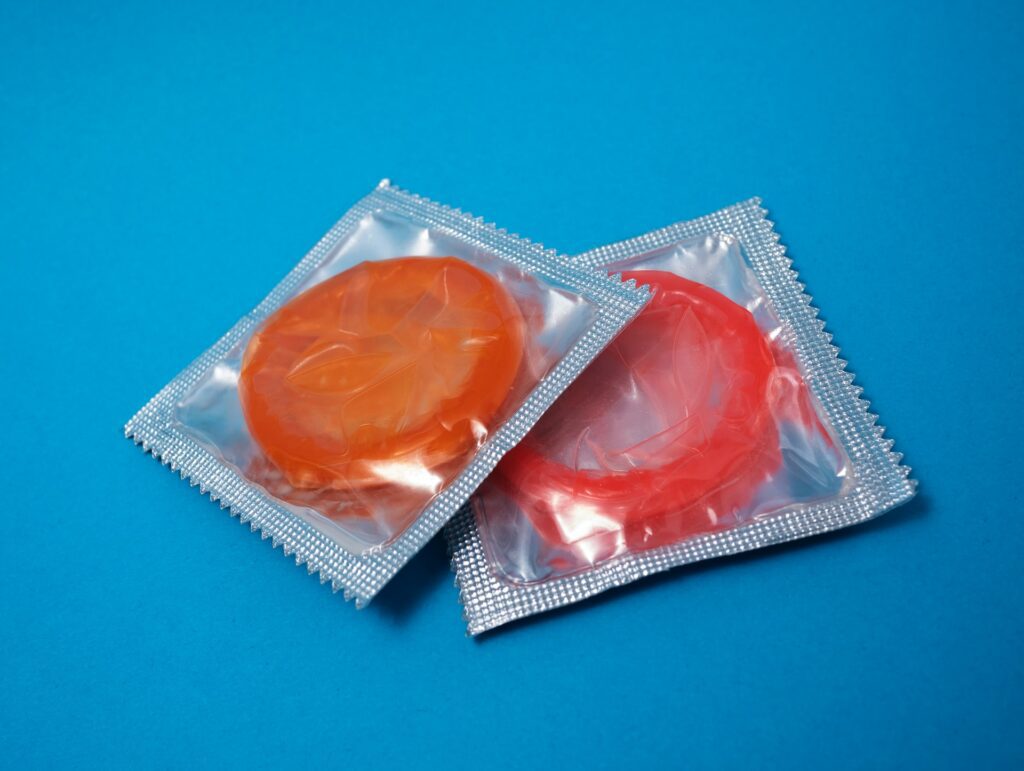How to use condom: The saying “condom and sex”, both are incomplete without each other” can no longer be considered wrong. Actually, as soon as condom is mentioned, sex comes to mind and when we talk about sex, it is very important to know how to use condom.
It is also very important to take care of how to use a condom during sex because it protects against unwanted pregnancy. Also, using condoms can protect against sexually transmitted diseases. However, using condoms during sex can be completely safe only when the condom is used correctly. If there is any mistake in the use of condom, then it can also cause many problems.
What is a condom?
A condom is a thin, tube-like covering that is worn over a man’s penis during sex (in the case of a male condom) or inserted into a woman’s vagina before sex.
A condom is a shell (cover) made of rubber. Which is used by men to cover the penis. This can prevent men from entering the woman’s uterus with their sperm during sex. Similarly, there are condoms made for women as well, which can be fitted inside the vagina.
A condom can only be used once. Used condoms should be disposed of properly after a single use. Most condoms are made of latex. People who are allergic to latex can use condoms made of polyurethane. If used correctly, condoms can prevent the risk of pregnancy by 85% to 98%.
How to choose the right condom for you ?
Choosing the right condom for you is important for both comfort and effectiveness. A condom that is too small may break, and a condom that is too big can slip off. Here are some tips on how to choose the right condom for you:
- Measure your penis- The most important factor in choosing the right condom size is the girth of your penis. You can measure your girth by wrapping a piece of string or a soft measuring tape around the thickest part of your erect penis.
- Look for condoms that offer a variety of sizes- Many condom brands offer a variety of sizes, so you should be able to find one that fits you well. Some brands even offer custom-fit condoms.
- Consider the type of condom you want- There are many different types of condoms available, including latex, polyurethane, and lambskin. Latex condoms are the most common type, but they may not be suitable for people with latex allergies. Polyurethane condoms are a good option for people with latex allergies, and they are also thinner and more sensitive than latex condoms. Lambskin condoms are made from the lining of sheep’s intestine, and they are the only type of condom that protects against HIV.
- Think about your preferences- Some people prefer condoms with a reservoir tip, while others prefer those without. Some people also prefer condoms with a lubricant, while others prefer those without.
- Put the condom in the right place- Don’t keep the condom in a pocket, your purse, or the bathroom. Instead, keep it in a cool-dry place, where the direct rays of the sun do not fall. Along with this, keep in mind that condoms should not come in contact with heat, moisture and friction.
- Practice Makes a Man Perfect – Instead of putting on the condom immediately at the time of intercourse, try wearing it some time before. Try wearing a condom alone a few times and learn how and for how long.
How to use condom?
Condoms can be used as long as you want. Some couples always use male condoms before sex as a means of preventing pregnancy for years while others use it as double protection (while taking another form of birth control such as the pill, copper T). You can use condoms for many years or just for one day. Know how to use condom?
Before using a condom, check the front and back of the condom. The upper part will be greasy, while the inner part will be dry.
Open the pack of condom only when there is an erection in the penis. If you’ve put on a condom the other way around, don’t take it out and put it on again.
This can increase the risk of pregnancy because, during sex, a liquid called pre-ejaculation (pre-cum) is continuously released from the penis of men, it can also increase the risk of sexually transmitted diseases (STDs) . When wearing a condom, keep the protruding tip of the condom pressed, so that it does not let air inside the condom.
Do not use a single used condom again. Dispose of it properly after use. Also keep it out of reach of pets or children. If the condom breaks or slips during intercourse, the male partner should immediately stop the sexual intercourse. After that, they can use a new condom or use other methods of birth control.
What are the benefits of using condoms?
- It is best to use condoms to prevent the risk of pregnancy and reduce the risk of sexually transmitted diseases.
- Using a condom is very easy.
- There are no side effects of using condoms.
- Condoms can be used by both men and women.
What to do with condom after use?
If you think or just want to know for your own satisfaction whether the condom broke during intercourse. So in this case, take out the penis from the condom and fill it with water and see if water is leaking out of it.
If water does not come out of the condom, then the condom is not torn. After intercourse, wrap the condom in a tissue by folding it or tying it. After that throw it in the garbage. Do not flush the condom, as this can clog the drain.
What to do if the condom bursts?
If your condom breaks during sex, take it out immediately. Remove the condom and put on a new condom. Apart from this, if you get information about condom bursting after sex, then there is no need to panic. Because with the help of contraceptive drugs, you can prevent unwanted pregnancy. In this situation, do not do anything without consulting the doctor.
You can use emergency contraceptive pills or a copper intrauterine device (IUD) for up to five days after having sex to prevent pregnancy. Apart from this, after unprotected intercourse, you and your partner may also need to get tested for sexually transmitted diseases.
Can there be disadvantages to using condoms?
While condoms are highly effective in preventing both sexually transmitted infections (STIs) and unintended pregnancies, it’s important to acknowledge that there can be some disadvantages to using condoms. Here are a few potential drawbacks:
1. Sensation: Some individuals may find that wearing a condom reduces sensitivity during sexual intercourse. The barrier created by the condom may diminish the level of physical sensation, which can affect pleasure for both partners. However, it’s worth noting that there are various types of condoms available, including ultra-thin options, which aim to maximize sensitivity.
2. Allergies or sensitivities: Some individuals may have allergies or sensitivities to latex, which is the material used in most condoms. This can result in discomfort, irritation, or allergic reactions. Non-latex alternatives, such as polyurethane or polyisoprene condoms, are available for those with latex allergies.
3. Breakage or slippage: Although rare, condom breakage or slippage can occur. This can happen if the condom is not used correctly, if it is expired, or if there is insufficient lubrication. Proper usage, careful handling, and adequate lubrication can help minimize the risk of breakage or slippage.
4. Interruption of spontaneity: Some individuals may find that the process of putting on a condom interrupts the spontaneity of sexual activity. It may require a brief pause to retrieve and apply the condom, which can disrupt the flow of intimacy. However, incorporating condom usage as part of foreplay or involving your partner in the process can help maintain the momentum and enhance communication.
5. Availability and accessibility: While condoms are widely available in most places, there can be situations where access to condoms might be limited or inconvenient. This can be a challenge in certain locations or situations where purchasing or carrying condoms may be stigmatized or restricted.
6. Sensitivity to lubricants: Some individuals may have sensitivities or allergies to lubricants used on condoms. If this is the case, it is advisable to choose condoms that are either unlubricated or use hypoallergenic lubricants.
Despite these potential disadvantages, it is important to note that the benefits of using condoms significantly outweigh the drawbacks. They provide effective protection against STIs, including HIV, and are a reliable method of contraception. Moreover, when used correctly, condoms are highly effective in reducing the risk of unintended pregnancies and promoting sexual health and well-being.
It’s also worth mentioning that many of the potential disadvantages can be mitigated by proper condom use, communication with your partner, and exploring different condom options to find the ones that best suit your needs and preferences.
Condoms should be used very carefully. Because it is made of very delicate rubber, which can be cut or torn very quickly by finger nails, rings and sharp objects.
Conclusion:
Condoms are the most effective way to prevent unwanted pregnancy. Along with this, they are also used to protect against sexually transmitted diseases. Many types of birth control options, such as hormonal birth control or spermicide combined with condoms, provide double protection against pregnancy and sexually transmitted infections.
Having the satisfaction that you are completely safe makes sex even more enjoyable. When you know that neither you nor your partner can get pregnant or get a sexually transmitted infection, both of you do sex with pleasure and feel relaxed.
Stop sex immediately if you feel any burning or itching in the penis during or after using a condom. Take out the condom from the penis and clean the penis with clean water. If the problem persists even after this, consult a doctor.




1 thought on “How to use condom? Know its safe tips”